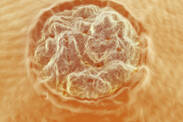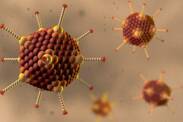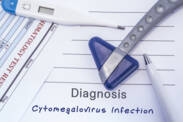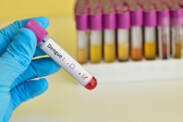Infections, diseases, ticks

Herpes: Why does herpes develop and how is it treated?
Herpes is an infectious disease caused by the herpes simplex virus. It is one of the most widespread viruses in the human population and affects up to 95% of people. It causes various diseases. Among harmless forms, oral herpes or cold sores is the most well-known.

STDs in summer: what are the dangers of sex tourism?
People travel in the summer for relaxation, others like to explore new countries or visit different sights. They crave to learn about unfamiliar cultures, their way of life and more. The desire to experience something new and unfamiliar is ingrained in us and difficult to control. This is especially true when it comes to meeting new people and having experiences with them. The threat posed by STDs, which short-term holiday acquaintances often bring, can be trivial but unpleasant, and sometimes even incurable with a fatal end. What are they and how do they manifest themselves? What are the risks and how can we protect ourselves?

Is it chicken eye or a viral wart?
They occur mainly on the face, neck, hands, feet, but can appear anywhere on the body. They are disturbing, unaesthetic and cause pain in the area where they are located. They are a common reason for a visit to the skin doctor. We are talking about skin growths, of which there are several types. However, the most common are warts (veruccae) and corns (clavus). The differences between them are noticeable. In this article you will read how to diagnose them correctly, but also how to treat them effectively.

Bronchitis: Symptoms and Contagiousness
Everyone of us has encountered bronchitis. Let's look at the causes and symptoms of the disease.

Skin abscess: what is it, what causes and symptoms of skin infection?
Most patients are diagnosed with an abscess associated with internal diseases. But an abscess can also affect our skin.

Balantidiasis: what are the causes and symptoms of this intestinal disease?
Balantidiasis is a rare infectious disease of the human colon and digestive tract. What causes balantidiasis, what are its first symptoms and treatment options?

Adenovirus infection: what is adenovirus, what is its transmission and symptoms?
Adenoviruses cause mainly acute respiratory diseases in humans. However, they can attack various body systems. What is an adenovirus and how is the disease transmitted? What is the appropriate treatment and preventive measures?

Tuberculosis of the lungs: what are the symptoms, causes and contagiousness of TB?
Tuberculosis is one of the most feared infectious diseases. It mainly affects the lungs. How does it manifest itself? What are its causes? What is the contagiousness of tuberculosis and how is it transmitted?

What is AIDS/HIV infection: transmission and symptoms?
HIV is abbreviated as the human immunodeficiency virus. The infection attacks cells in a person's lymphatic system. Its worst stage is AIDS - acquired immune deficiency syndrome. How is the disease manifested, transmitted and what treatment options are available?

Angina, tonsillitis: what causes and symptoms does it have?
Angina is an infectious disease characterized by inflammation of the tonsils, mostly the palatine tonsils. The inflammation is accompanied by swelling of their structures and pain in the throat. Angina occurs mainly in children. It is one of the most common causes of visits to the doctor. What are its symptoms? How can we distinguish it from other upper respiratory tract diseases?

Cytomegalovirus infection: what it is, causes, symptoms and CMV in children
Cytomegalovirus is an unknown virus to many. Many women only learn about it during pregnancy. How is it dangerous?

Dengue fever: what are its causes and symptoms? (+ Transmission and mosquitoes)
Dengue fever is transmitted by mosquitoes. What are the symptoms and how to protect yourself?

Leprosy: What is leprosy, how does it occur and what are its symptoms?
Leprosy is a serious infectious disease. It mainly affects the peripheral nerves, limbs, skin and mucous membranes of the upper respiratory tract. How is leprosy transmitted, manifested and treated?

Lyme disease: How does transmission occur and how does it manifest? + Treatment
Lyme disease is a multi-systemic infectious disease of bacterial origin. Humans become infected with this disease after being bitten by an insect. This spot is typically reddened by a large rash. It can take place in a lighter form. Chronic disease is sometimes treated for many years.

What is the plague, what are its causes and symptoms?
What is MOR and how is it transmitted or manifested? Its occurrence in the world today and in the past.

Mumps: what are the symptoms of mumps? Transmission and vaccination
Mumps, inflammation of the parotid glands. Why do they occur, what are the symptoms and treatment? Is vaccination an effective protection?

Puerperal (postpartum) infections: why do they occur and what are their symptoms?
Puerperal infections occur in the postpartum period, during the first six weeks. They threaten the life of the mother. They occur after live births, stillbirths, but also after spontaneous abortions and induced abortions.

Inflammation of the uterus: Causes and Impact on Fertility
Endometritis, i.e. inflammation of the uterus, is a bacterial infectious disease that most often affects women of working age between 20 and 30 years of age, often after childbirth or miscarriage, but can also affect older women.

Sinusitis - sinusitis: what is it and what symptoms does it have?
Sinusitis is an inflammation of the sinuses. It often occurs alongside a cold or tonsillitis. It is usually caused by viruses and bacteria.

Meningitis - Inflammation of the meninges
Meningitis, i.e. inflammation of the protective membranes covering the brain and spinal cord, is a neuroinfection. It affects the brain, the meninges, the spinal cord and peripheral nerves. The severity of the disease varies from asymptomatic to life-threatening.









